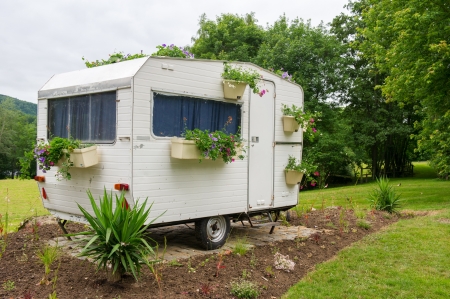Introduction: Embracing Car-Free Adventures
In recent years, the appeal of sustainable travel has been steadily gaining momentum across the UK, and Dartmoor stands out as a prime destination for those seeking an eco-friendly escape. With its dramatic tors, ancient woodlands, and open moorland, Dartmoor National Park offers a unique opportunity to disconnect from the rush of city life and reconnect with nature—without relying on a car. Opting to explore Dartmoor’s campsites using public transport not only reduces your carbon footprint but also invites you to experience the landscape in a more immersive, mindful way. Travelling by bus or train encourages slower journeys, spontaneous discoveries, and meaningful interactions with local communities. This approach sets the tone for a camping adventure that prioritises environmental responsibility and a deeper appreciation of Dartmoor’s natural beauty. By leaving the car behind, you become part of a growing movement towards responsible tourism—one that preserves these wild spaces for future generations while offering a refreshing alternative to the conventional road trip.
Accessing Dartmoor by Public Transport
For those wishing to explore Dartmoor’s campsites without a car, the journey can be surprisingly straightforward thanks to a network of rail and bus services that link the national park with major cities across the UK. Below, you’ll find practical advice on planning your route and making seamless connections using public transport.
Train Connections from Major UK Cities
The primary railway gateway to Dartmoor is Exeter St Davids, which benefits from direct services from cities such as London, Birmingham, Manchester, and Bristol. From London Paddington, for example, Great Western Railway operates regular high-speed trains to Exeter, typically taking around two and a half hours. For those coming from the North or Midlands, CrossCountry trains provide direct links to Exeter as well.
| Departure City | Main Rail Operator | Approximate Journey Time to Exeter |
|---|---|---|
| London (Paddington) | Great Western Railway | 2 hrs 30 mins |
| Birmingham (New Street) | CrossCountry | 2 hrs 50 mins |
| Bristol (Temple Meads) | Great Western Railway | 1 hr 10 mins |
| Manchester (Piccadilly) | CrossCountry | 4 hrs 15 mins |
The Dartmoor Line: Reaching the Heart of the Moor
A particularly useful rail service for campers is the Dartmoor Line, which has recently been restored between Exeter and Okehampton. This line provides direct access to the northern edge of Dartmoor, placing you within striking distance of several popular campsites and walking trails. Trains run hourly most days, and Okehampton station itself offers visitor facilities including a café and taxi rank.
Sample Train Route: London to Okehampton via Exeter
- London Paddington → Exeter St Davids (direct train)
- Exeter St Davids → Okehampton (Dartmoor Line service)
- Total journey time: Approximately 3 hrs 30 mins
Connecting Bus Services into Dartmoor
Once you’ve arrived at Exeter or Okehampton by train, local bus routes provide essential onward connections deeper into Dartmoor National Park. Notably:
- Dartline 118: Links Okehampton with Tavistock via key villages such as Lydford and Princetown—ideal for accessing northern and central campsites.
- Stagecoach Gold X38: Runs between Exeter and Plymouth, stopping at Ashburton and Buckfastleigh—handy for southern Dartmoor camping spots.
- Haytor Hoppa: A summer-only service connecting Newton Abbot with Haytor for hikers heading towards moorland campsites.
Example Bus Journey Table
| Bus Route | Main Stops in Dartmoor | Frequency (Weekdays) |
|---|---|---|
| Dartline 118 | Okehampton – Lydford – Princetown – Tavistock | Every 2 hours |
| X38 Stagecoach Gold | Exeter – Ashburton – Buckfastleigh – Plymouth | Hourly |
| Haytor Hoppa (Summer Only) | Newton Abbot – Bovey Tracey – Haytor Rocks | Every 90 mins approx. |
Practical Tips for Planning Your Journey
– Use National Rail Enquiries or Trainline for up-to-date train timetables.
– For buses, Traveline South West provides comprehensive route planners and live updates.
– Consider purchasing a Devon Day Ranger ticket if you plan to use multiple bus operators.
– During summer weekends and bank holidays, services may be busier than usual—booking train tickets in advance is advisable.
– If arriving late in the day, check campsite reception hours before setting off.
This reliable network of rail and bus options means you can experience Dartmoor’s wild beauty while leaving your car—and its carbon footprint—behind.

3. Choosing the Right Campsite
If you’re keen to experience Dartmoor without a car, selecting the right campsite is crucial for a smooth adventure. Not every site is equally accessible by public transport, so your first step is to pinpoint those that offer the easiest connections with buses or trains. Focus on campsites near towns or villages with regular transport links—places like Princetown, Moretonhampstead, and Yelverton are excellent starting points. For example, Barley Meadow Touring Park sits conveniently close to Whiddon Down, which is served by local bus routes; similarly, Langstone Manor Park near Tavistock has reliable connections via the Tavistock bus service.
When choosing your base, consider more than just proximity to public transport stops. Facilities can vary widely: some campsites offer hot showers, Wi-Fi, and on-site cafés—creature comforts for those who prefer not to rough it—while others provide a more back-to-basics experience. If you plan on walking straight from the bus stop to your pitch, check whether the route is safe and manageable with luggage or if a short taxi ride might be necessary.
Another factor is how close the campsite is to Dartmoor’s main trails or attractions. Sites near major footpaths like the Two Moors Way or the Granite Way make it easier to explore on foot, saving time and energy. It’s also wise to look for campsites that have clear information about their nearest bus or train stops on their website or booking materials; this attention to detail often signals they are accustomed to welcoming car-free travellers.
Finally, book ahead during peak periods. Popular campsites accessible by public transport tend to fill up quickly—especially during school holidays or bank holiday weekends—so securing your spot in advance can save hassle later. Opting for a well-located site not only simplifies your journey but sets the tone for a relaxed and eco-friendly stay in Dartmoor.
4. Planning Your Journey: Timetables and Tickets
Successfully navigating Dartmoor’s campsites by public transport hinges on careful planning—especially when it comes to timetables, ticket booking, and understanding the best ways to combine different modes of travel. Here’s a practical guide to ensure your adventure is as smooth as possible.
Timetable Navigation: Where to Start
The UK boasts an extensive network of buses and trains, but rural connections can be infrequent. Begin with National Rail Enquiries for train schedules, and use Traveline South West for local bus routes serving Dartmoor villages and key campsite access points. Remember that services may be limited on Sundays or public holidays, so always double-check timings for both outbound and return journeys.
Booking Your Tickets: Tips and Tools
Advance planning pays off. For trains, booking ahead via National Rail, Trainline, or individual rail company sites often yields lower fares. For buses, check operator websites like Stagecoach or First Bus. Mobile tickets are widely accepted—consider downloading the relevant apps in advance.
Popular Ticketing Platforms and Apps in the UK
| Platform/App | Main Use | Website/App Link |
|---|---|---|
| National Rail Enquiries | Train times & live updates | nationalrail.co.uk |
| The Trainline | Train/bus tickets & route planning | thetrainline.com |
| Traveline South West | Bus timetables & journey planning (SW England) | travelinesw.com |
| Stagecoach App | Bus tickets (Devon) | stagecoachbus.com |
| Google Maps / Citymapper* | Multi-modal journey planning, real-time info* | citymapper.com* |
*Citymapper coverage is mainly urban but can assist with key towns around Dartmoor.
Making the Most of Multi-Modal Travel Options
Dartmoor’s remote charm often requires combining trains with local buses or even taxis for the final stretch. Look out for PlusBus add-ons when buying train tickets, which offer discounted local bus travel from selected railway stations such as Exeter St Davids or Newton Abbot. If your route involves cycling part-way, National Rail provides bike carriage info per service—always check policies before setting off.
Handy Tips for Stress-Free Travel:
- Download offline timetables: Mobile signal can be patchy on the moor.
- Cushion your connections: Allow extra time between trains and buses in case of delays.
- Check return options: Some last buses depart mid-afternoon; don’t get stranded!
- Group/Day passes: These can save money if you plan multiple journeys in one day.
- Buses accept contactless payment: But always carry a bit of cash for remote routes just in case.
If you take the time to prepare using these trusted UK resources, you’ll find travelling car-free to Dartmoor’s campsites not only practical but rewarding—leaving you free to enjoy the landscape without worrying about parking or traffic jams.
5. What to Pack for a Car-Free Camping Trip
Heading into Dartmoor without a car means every item in your rucksack matters. Packing light is essential, but you’ll also need to be prepared for unpredictable British weather and the practicalities of travelling on buses or trains. Here’s a straightforward packing list and some honest advice, especially if you’re new to car-free camping.
Lightweight Camping Gear
- Backpack: Choose something between 40–60 litres; anything larger becomes cumbersome on public transport.
- Tent: Go for a lightweight, compact tent—ideally under 2kg and quick to pitch in the rain.
- Sleeping Bag: Opt for one rated for at least 3 seasons. British nights can get chilly even in summer.
- Sleeping Mat: Inflatable or foam mats keep weight down and comfort up.
Clothing Essentials
- Waterproofs: A reliable waterproof jacket and over-trousers are non-negotiable—Dartmoor is famous for sudden downpours.
- Base Layers: Breathable, moisture-wicking tops and thermal layers work best.
- Walking Boots: Broken-in, waterproof boots are crucial for boggy moorland trails.
- Socks & Extras: Bring extra pairs of socks; wet feet can ruin your adventure fast.
Cooking & Eating
- Stove: A small gas stove or compact alcohol burner that fits in your pack; check transport rules regarding fuel canisters beforehand.
- Cookware: One pot or mug, spork, and maybe a lightweight bowl—keep it minimal.
- Food: Pack simple meals like dehydrated pouches, oat bars, and tea bags—essentials for a true British brew on the moor.
Packing Tips for Public Transport
- Use dry bags or bin liners inside your rucksack to keep kit dry between bus stops and campsites.
- A foldable daypack is handy if you want to leave your main bag at camp while exploring.
A Few Extras Worth Their Weight
- Torch or headlamp (plus batteries)
- Map & compass (don’t rely solely on your phone—signal can be patchy)
- Reusable water bottle (fill up whenever you find a tap—streams aren’t always safe)
This kit list keeps things practical: light enough for public transport yet robust enough to handle Dartmoor’s temperament. With the right preparation, leaving the car behind isn’t just feasible—it can make your camping experience more rewarding and environmentally friendly.
Exploring Dartmoor on Foot and by Bike
Once you’ve arrived at your chosen Dartmoor campsite by public transport, the real adventure begins. Embracing a car-free approach not only reduces your environmental impact but also allows you to experience Dartmoor’s wild beauty up close. With a network of well-maintained walking paths and cycling trails criss-crossing the moor, it’s remarkably easy to explore on foot or by bike.
Walking: Discovering Dartmoor’s Trails
Dartmoor is famous for its scenic footpaths, ranging from gentle riverside strolls to challenging hikes over rugged tors. Many campsites are situated near established routes such as the Two Moors Way or the Dartmoor Way, both offering varied landscapes and plenty of wildlife spotting opportunities. For an accessible yet rewarding walk, try the circular route from Princetown that takes in South Hessary Tor—perfect for soaking in those sweeping moorland views without venturing too far from base. Always carry a reliable OS map and check weather conditions before setting out, as Dartmoor’s climate can be changeable even in summer.
Cycling: Pedal-Powered Adventures
Cyclists are equally well-catered for, with trails suitable for all abilities. The Granite Way is particularly popular—a mostly traffic-free route following a disused railway line between Okehampton and Lydford, offering panoramic views of the surrounding countryside. For more experienced riders, sections of the Dartmoor Classic sportive provide a challenging day out. When cycling on minor roads or bridleways, remember to respect other users and take care on narrow lanes often shared with livestock.
Hiring Bikes Locally
If you haven’t brought your own wheels, several local businesses offer bike hire close to transport hubs like Okehampton and Bovey Tracey. Many also supply maps, helmets, and advice tailored to your ability level—just ring ahead during busy periods to avoid disappointment. Electric bikes are becoming increasingly available, providing a welcome boost on longer rides or steeper gradients.
Sustainable Exploration Tips
To help protect this precious landscape for future visitors, always stick to marked paths where possible, close gates behind you, and take any litter home. Consider starting walks early or later in the day to avoid peak times on popular routes. Finally, support local cafés and shops along your journey—they’re often delighted to serve walkers and cyclists who have made the effort to travel sustainably.
7. Conclusion: The Joy of Slow Travel in Dartmoor
Choosing to explore Dartmoor’s campsites by public transport rather than car isn’t just a practical decision—it’s an invitation to experience the true essence of slow travel in the British countryside. When you swap the steering wheel for a bus ticket or a sturdy pair of walking boots, every mile becomes more meaningful. You notice the wildflowers on the verge, hear the song of skylarks above open moorland, and feel genuinely connected to the land and its communities. Travelling car-free encourages you to move at a gentler pace, discover hidden local gems, and engage with fellow travellers and locals along the way. There’s a unique satisfaction in navigating timetables and footpaths, knowing your journey is lighter on the environment and richer for the soul. Next time you’re planning an adventure in the UK countryside, consider leaving the car behind—Dartmoor’s wild beauty rewards those who take it slow, tread lightly, and embrace the joys of sustainable exploration.


